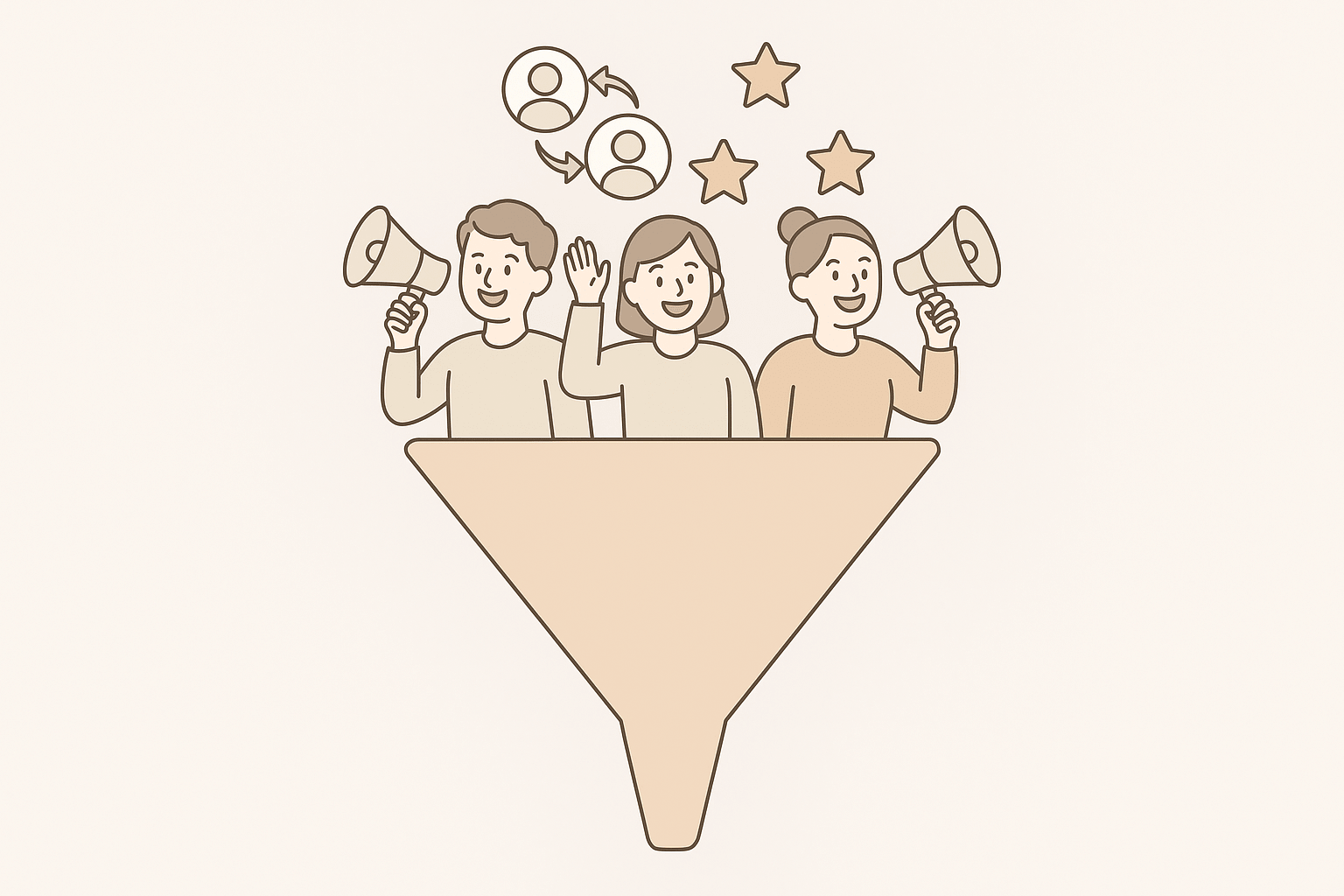
The Upside-Down Funnel: Why Smart Marketing Starts with the Customer
Forget traffic. Forget followers. Forget funnels.
If your current customers don’t love what you offer, none of it matters.
That’s the logic behind the upside-down marketing funnel—a strategy built on one core belief: take care of your customers first, and growth takes care of itself.
What Is the Upside-Down Funnel?
Traditional marketing funnels look like this:
- Awareness
- Interest
- Desire
- Action
- (Eventually) Loyalty
The customer comes last.
The upside-down funnel flips that logic. Loyalty comes first. Instead of pouring budget into top-of-funnel awareness, the focus shifts to maximizing value for the people already inside the ecosystem—your customers.
Make your offer unmissable. Deliver so well they tell others. Then give them the tools to do it.
That’s modern word-of-mouth, systemized.
The Core Principle: Product Over Promotion
Most companies spend too much on marketing and too little on experience.
But if your product is genuinely great, it creates its own gravity. Customers want to stay. They want to share.
Apple didn’t scale through ads. They scaled by making people feel something. And those people did the heavy lifting.
The same applies to your business—B2B or B2C.
Ask:
- Does your customer want to tell someone about this?
- Have you made it easy for them to do so?
- Are you rewarding them when they do?
Customer Success Is Your Best Acquisition Strategy
There’s no better lead than a referral from a happy customer.
Yet most brands ignore the post-sale journey.
An upside-down funnel means optimizing for:
- Fast onboarding
- Active usage
- Clear wins
- Delighted support experiences
- Thoughtful follow-up
You don’t need 1,000 leads. You need 10 champions.
Build Advocacy Into Your Process
The goal isn’t just retention—it’s evangelism.
That only happens if you:
- Overdeliver without being asked
- Send unexpected value (a playbook, a strategy session, an intro)
- Create referable experiences worth talking about
Once that’s built in, add structure:
- Referral programs
- Affiliate partnerships
- UGC or testimonial capture
- Shareable dashboards or progress reports
- Customer spotlights or co-marketing
Let your best customers pull more customers in.
Real Talk: It Only Works If You Deliver
This isn’t a shortcut. It’s a multiplier.
If your product or service underdelivers, no amount of “customer-first” language will save you.
But if you nail delivery—this approach compounds fast.
People buy when people talk. The upside-down funnel is about giving them a reason to.
Final Word
The future of marketing is less about persuasion and more about proof. Focus on building something worth sharing, then make it easy to share. That’s the new funnel.
Join 1,000+ CompaniesImproving Email Deliverability
Start with 200 free validations. Upgrade only when you're ready.
No credit card required • Cancel anytime